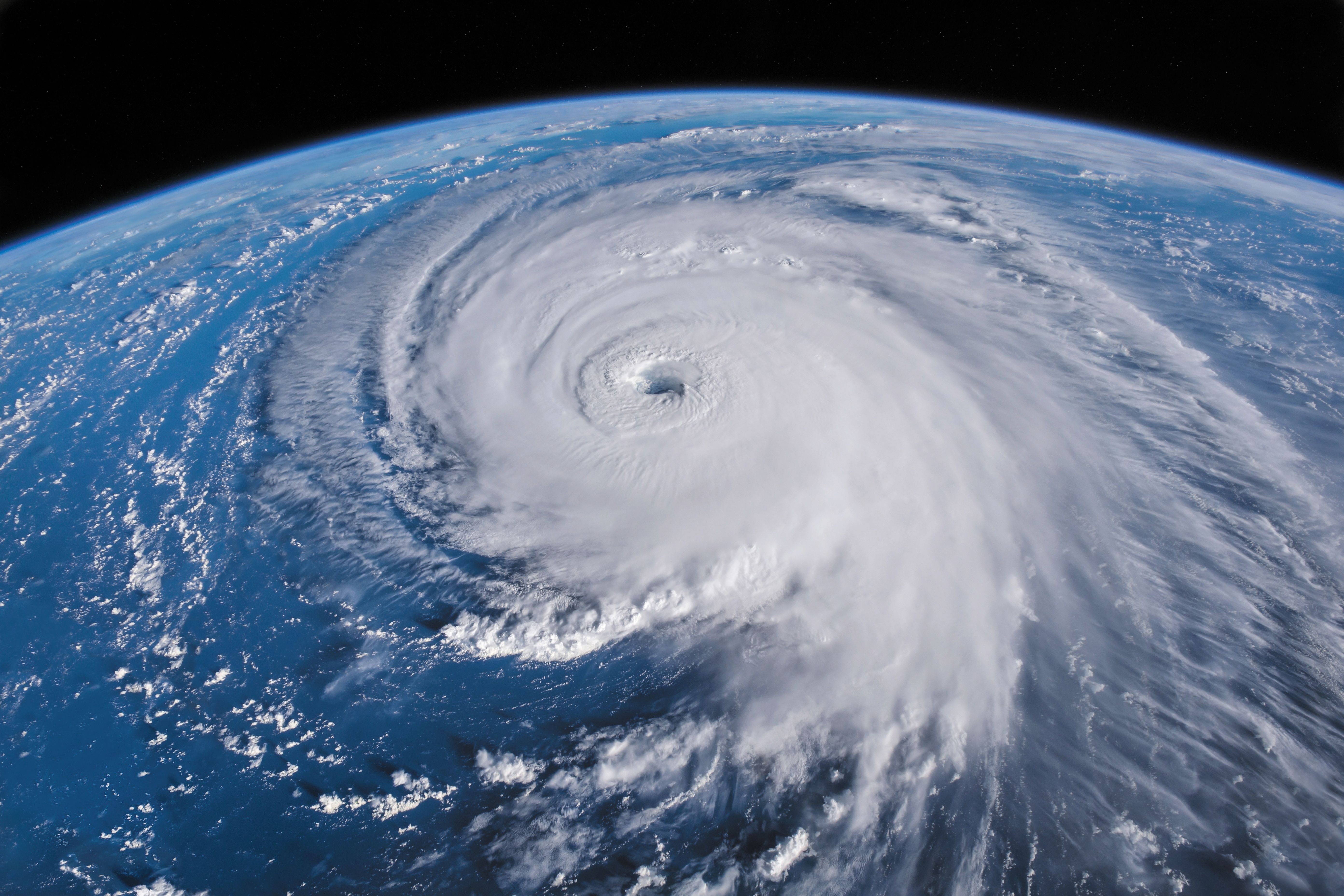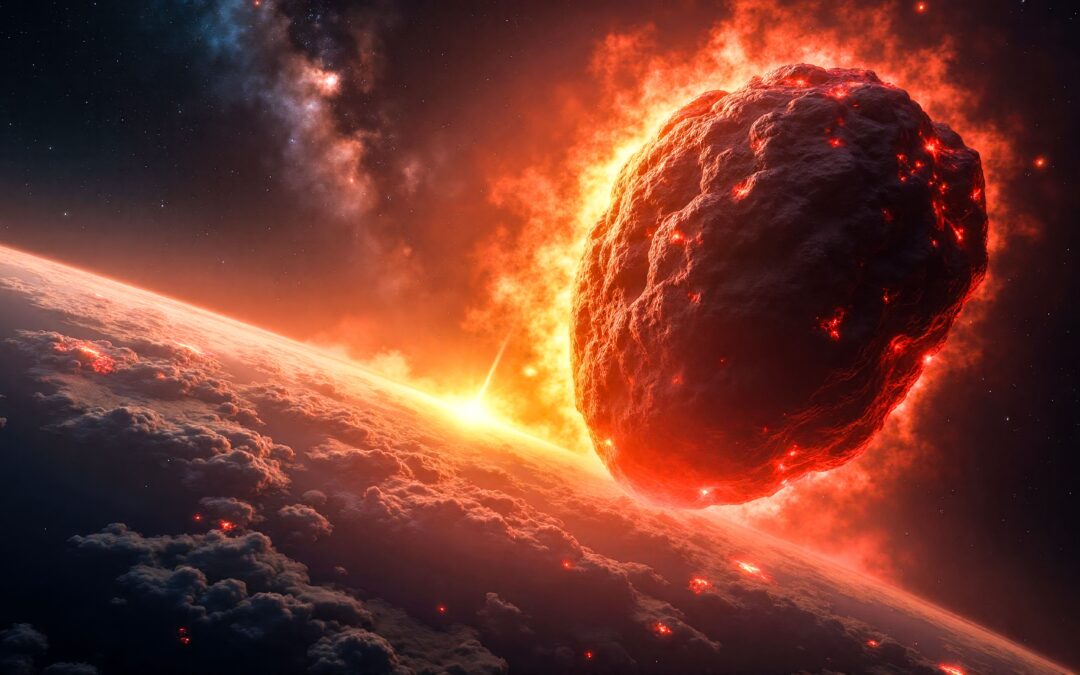Round 66 million years in the past, Earth underwent a catastrophic occasion that worn out almost 75% of all species, together with the dinosaurs. This wasn’t the primary mass extinction in our planet’s historical past, but it surely was one of the crucial transformative, reshaping ecosystems and paving the way in which for brand new life types.
The so-called Cretaceous-Paleogene extinction (or Okay-Pg extinction, also referred to as the Okay-T extinction) left an indelible mark on Earth’s biodiversity and evolution. It really is certainly one of science’s best discoveries that altered our known history. Scientists consider it was triggered by a mixture of volcanic eruptions, local weather adjustments, and a large asteroid affect, which collectively shaped an virtually insurmountable barrier to survival.
Whereas this extinction devastated numerous species, it additionally led to the evolution of mammals and, finally, people. This is a more in-depth have a look at what occurred throughout Earth’s final mass extinction, the way it modified the world, and what scientists have uncovered concerning the dramatic shift throughout our planet’s historical past.

Associated
These Museums Hold The Remains Of Earth’s Most Terrifying Extinct Creatures
People have extinction to thank for having the ability to stay peacefully on earth and never have to fret about being the dinner of those beasts.
The Earth’s Final Mass Extinction Ended The Dinosaurs’ Reign
The Okay-Pg extinction led to the speedy lack of species, setting a brand new stage for evolution
Roughly 66 million years in the past, an asteroid larger than Mount Everest collided with Earth, forming the Chicxulub crater (one of many cenotes you need to have on your bucket list when visiting the Yucatan Peninsula).
This affect launched an unimaginable quantity of vitality, equal to billions of atomic bombs, and despatched shockwaves via the Earth’s crust. The instant results had been devastating—huge wildfires, tsunamis, and a cloud of particles that blocked daylight for months and even years. As temperatures plummeted and photosynthesis turned not possible, plant and animal life started to vanish.
Throughout this era, complete ecosystems collapsed. With out daylight, vegetation and phytoplankton died, disrupting meals chains that trusted them. Dinosaurs, which had dominated terrestrial ecosystems for over 160 million years, had been unable to outlive the abrupt adjustments in local weather and setting.
- Almost 75% of all species on Earth, together with most dinosaurs, had been eradicated by the top of this extinction occasion.
The Okay-Pg extinction occasion reset Earth’s biodiversity, permitting solely probably the most adaptable species to outlive and thrive within the altered world.

Associated
Scientists Find “Fully Intact” 80-Million-Year-Old Dinosaur Eggs
Totally intact dinosaur eggs are fairly uncommon, however these scientists had been fortunate sufficient to search out fully fossilized variations at a building web site.
How Volcanic Eruptions Intensified The Disaster
Intense volcanic exercise added to the environmental stress of the asteroid affect
Alongside the asteroid affect, some scientists consider intense volcanic activity played a critical role in the K-Pg extinction. In what’s now India, the Deccan Traps launched huge portions of lava and greenhouse gasses over an prolonged interval. In reality, if these volcanoes had been nonetheless lively, they’d be among the many world’s most dangerous volcanoes to visit.
This volcanic exercise started effectively earlier than the asteroid hit, however the environmental toll reached new ranges when it coincided with the affect. The eruptions launched sulfur dioxide, which cooled the planet by blocking daylight, together with carbon dioxide, which later led to warming and acid rain that additional harmed ecosystems.
The twin affect of the asteroid and volcanism triggered drastic fluctuations in international temperatures, making survival almost not possible for a lot of species. These eruptions disrupted the oceans, resulting in ocean acidification and harming marine life, which compounded the consequences of disrupted meals chains.
This mix of catastrophic occasions made it difficult for species to adapt, accelerating the collapse of ecosystems and driving the mass extinction ahead.

Associated
8 Most Dangerous Volcanoes To Visit In The World
Right here, we’ll have a look at eight of probably the most harmful volcanoes on the planet, how a lot of an imposing specter they’re, and the way a customer can get to them.
The Rise Of Mammals After The Mass Extinction
The aftermath of the Okay-Pg extinction opened new evolutionary paths for mammals
Within the wake of the mass extinction, Earth entered a interval of restoration. With dinosaurs gone, ecological niches opened up, permitting new life types to emerge and evolve. Mammals, which had beforehand lived within the shadow of the dinosaurs, started to diversify and occupy these vacant niches. This era noticed the emergence of mammals with bigger physique sizes and extra various diets, setting the stage for future evolution.
The extinction cleared the trail for primates and, finally, people. Research of fossil data point out that mammal species flourished within the post-extinction setting, radiating into totally different types and adapting to new habitats.
This adaptive radiation laid the inspiration for the varied mammalian species that might come to dominate the Earth, in the end resulting in the rise of Homo sapiens.
- Inside just some million years after the extinction, mammals started evolving traits fitted to advanced ecosystems, akin to specialised enamel and elevated mind sizes.
The Okay-Pg extinction, subsequently, not solely marked the top of 1 period but additionally the daybreak of a brand new one, with mammals getting into dominant roles inside ecosystems.

Associated
Meteorologists Witnessing First-Hand How Climate Change Is Impacting Natural Disasters: Predicting Catastrophic Storms Before They Develop
An Emotional Broadcast by One of many Most Revered and Longest-Tenured Meteorologists in South Florida Confirms International Warming Is Explanation for Catastrophe
May Earth Expertise One other Mass Extinction?
Scientists warn of present threats which will result in a brand new mass extinction
At present, many scientists fear that Earth might be getting ready to one other mass extinction. Climate change, deforestation, pollution, and biodiversity loss threaten not only your 2024 travel plans, but additionally quite a few species, main some to name this era the “sixth mass extinction.” In contrast to earlier occasions, this potential extinction is essentially pushed by human exercise. Species are vanishing at an unprecedented charge resulting from habitat destruction and air pollution, and the long-term results might be devastating.
The present extinction trajectory reveals alarming similarities to previous extinctions, notably in how species loss disrupts ecosystems. Conservation efforts are underway globally to forestall additional injury, however with out important adjustments, Earth may see one other huge lack of biodiversity.
Understanding the previous can assist humanity put together for the longer term. The Okay-Pg extinction illustrates how interconnected ecosystems are and the cascading results of biodiversity loss—classes which can be particularly related as we face in the present day’s environmental challenges.
References: American Museum of Pure Historical past, UC Berkeley, Nationwide Geographic, WorldWildlife.org



Recent Comments